The rule in almost every living room used to be that furniture matched perfectly. Nowadays, more and more people are embracing the appeal of mixing and matching to provide more freedom and personality to space. Above all, matching sofas and accent chairs mix boldly with people in material, color, shape, and style for a unique visual effect.
However, how to avoid confusion while pursuing personalization remains a challenge in the minds of many. In this post, we will give 11 mix-and-match tips for sofas and accent chairs to help you get out of yourself, be creative, and bring unparalleled excitement to your living room!
Should You Mix and Match Sofas and Accent Chairs?
Of course, you can mix and match sofas and accent chairs! It's not just a trend; it's one surefire way to let your space express your style.
This is a foundational question for any decorator. For a deeper dive, our guide on whether accent chairs have to match offers more insights, confirming that mixing is a surefire way to express your personal style.
Mixing and matching makes furniture more flexible, allowing it to be adjusted to suit the season, mood, or trend.
Mixing and matching reflects your personality and taste, making your living room less cookie-cutter and more full of stories and life.
The best match is the one you feel comfortable and at ease. So, let go of the idea and boldly try it out! You will find that mix and match is not only beautiful but can also make the home more of your style.
11 Tips for Mixing and Matching Sofas and Accent Chairs
Mix and Match Different Styles
Many people may have a fear that, with the amalgamation of styles, a space will just appear cluttered and hard to coordinate. Still, a clever collision of style can infuse energy and personality into a space. It's much like life: often, elements that are ostensibly so different will suddenly ignite the sparks.
For instance, if your living room is a clean Scandinavian style, you could bring in a dark wood accent chair in traditional style. A gray fabric sofa with a modern style might look visually refreshing paired with a chair having a vintage embroidered pattern.
Other examples of some interesting mix-and-match styles are:
- Minimalist and rustic
- Industrial and bohemian
- Japanese minimalist and vintage
Add Interest with Unexpected Colors
The secret of color matching is to seek balance. You can choose complementary colors or pick different shades from a similar color palette. The most important thing is that the newly added color complements the whole atmosphere of the space harmoniously and naturally.
Sometimes, out of the box can make an effect quite unexpected and stunning. For instance, a dark grey sofa next to a bright orange chair instantly breaks up the dull, space lively up. Or, the classic black and white sofa with a deep red chair creates an impact of both elegance.
Color matching is not necessary in extreme contrast. Gentle transition can also add a sense of hierarchy. A beige-colored sofa and a warm-green-color chair can bring a sense of tranquility and comfort with soft color differences.
Some accent color pairings include:
- A burgundy leather sofa with a mint green lounge chair
- Navy blue fabric sofa with a bright orange leather accent chair

Use Contrasting Fabrics
Using contrasting fabrics is one surefire way to add richness through layering and texture to an interior. You can place a suede accent chair beside a sleek leather sofa, or you can use a soft wool blanket beside delicate silk pillows for a strong textural contrast.
One example is a rough linen couch combined with a soft and smooth velvet chair; a seemingly simple difference in the fabric can add unique depth and dimension to a room. Even within the same color palette, juxtaposed different materials can add a lot of three-dimensionality to a space.
Some examples of contrasting fabrics that work well together:
- Dark blue velvet + beige linen
- Brown leather accent chair + Milan green suede
- Denim + Velvet
Mix Colors and Prints
Don't overlay patterns; making each one unique, yet there is some sense of resonance between them. For instance, in a geometric pattern sofa paired with an accent chair with a floral print hardness of the geometric pattern contrasts with the softness of the florals, yet visual clashes are avoided since similar tones, for instance, can use the same color palette.
For a perfect example of a statement-making print, consider the Allston armchair. Its wide array of vibrant floral and patterned designs makes it an ideal piece to pair with a solid-colored sofa, creating an artistic focal point in any living room.
Color palettes should be layered and not randomly set. For instance, if your sofa has a dark tone, you can complement that with a brightly colored printed chair. The tone of the printed chair should be coordinated with the base color of the sofa to avoid color clashes in the space.
These can be very easily toned down with some simple accessories when mixing and matching prints and colors. A plain cushion or a plain blanket is used to balance the prints in that space.
Here are some fun examples of mixing colors and prints:
- Dark blue botanical print sofa and lemon yellow striped armchair
- Pink geometric print sofa with gray plaid accent chair
- Vintage floral print sofa with a solid-colored leather accent chair

Play with Symmetry
The beauty of a symmetrical layout is that it brings a sense of inherent order to a space, making it feel reassuring and comfortable. Deliberate symmetry can look stiff; the details of asymmetry and a little spunk make a space more dynamic.
A common way to do this is to have an accent chair of the same style on each side of the sofa. For instance, use a darker-toned sofa with two lighter-colored chairs, but make minor adjustments to the cushions or accessories, such as making one side of the chair cushions a slightly darker color than the other.
Some examples of using symmetry in a living space include:
- A three-person sofa, centered, flanked by one vintage-style single accent chair on either side
- Two identical double sofas facing one another, a rectangular coffee table centered, with a floor lamp on either side
- An L-shaped sofa occupies a corner, opposite two identical armchairs, with a large square marbled rug centered
Try Different Arrangements
Sometimes, all it takes is a simple layout change to reconfigure a space. In a 'conversational' setting, for instance, the sofa and accent chairs are generally placed around a coffee table or a focal point; this positioning allows each seat to face one another and helps to foster a sense of interaction.
Set your sofa and chairs a comfortable conversational distance apart in a conversational layout. Try spreading the chairs out a bit to create a sense of openness in your room.
Another popular approach is the 'L-shaped' layout, which is suitable for rooms with natural focal points such as a window or a TV wall. In this, one needs to keep an eye on the distance between the chairs and sofas so that the space does not appear to be spread out too much.
You can attach these two parts of the space, therefore enhancing the overall feeling, by chucking some accessories together, such as lamps and small side tables.
Following are some examples of living room layouts:
- Placing a large sofa at an angle and flanking it with a different style of accent chair on each
- Place two small double sofas facing each other, with a rectangular coffee table in the center and a rocking chair on each side
- Place an L-shaped sofa in the corner, opposite a recliner and small bookshelf
Add Different Shapes
It is important to keep a sense of proportion with the different shapes; too many curves can make a space cluttered, and too many straight lines are stiff. When mixing more than one shape, make sure their size and color are echoing each other to avoid disproportionate proportions.
A common combination would be round and square together. For example, a simple square sofa can be combined with a round accent chair to break the monotony of straight lines. Enhance this effect by placing a round or small oval-shaped coffee table to soften hard lines in the space.

If you prefer a bolder pairing, you can also try mixing and matching multiple shapes. For example, place accent chairs of different shapes on either side of the sofa, square on one side and curved on the other.
You can also introduce different shapes through accessories. Try placing a round mirror, a triangular shelf, or a hexagonal wall hanging to make the space more interesting.
Various shapes of home ensembles:
- A rectangular sofa with two semi-circular accent chairs with an octagonal-shaped center coffee table
- A curvy sofa with a square-shaped bookshelf and a triangular-shaped side table
Liven up the Atmosphere with Bold Chairs
Bold is not blindly gaudy. It's an art of perfect balance between impressive and practical. An accent chair with a strong design can lighten up an instant creative spark throughout the interior.
So in choosing a bold chair, it is best to contrast it with the sofa, but not clash in colors or materials. You may still soften that difference with small items like cushions and rugs. Placing a bright orange or navy blue chair against the background of a soft beige or gray sofa immediately lights up the place.
Another way is to choose a chair with a unique shape. For example, place a metal chair with geometric lines next to the sofa or a minimalist chair with a unique design. Avoid choosing too big or complicated chairs to make the space look cramped.
The Highland Barrel Chair is an excellent example of a piece that is both bold in its potential patterns and classic in its shape. With unique floral and patterned options, its modern barrel design can serve as functional art against a neutral sofa.
Examples of bold chair pairing are:
- A furry chair with colorful stripes in an all-white minimalist living room
- Adding a clear acrylic modern chair in a vintage-inspired living room
Using Cushions and Blankets
The easiest way to add layers to your living room is to make clever use of cushions and blankets. Not only do cushions and blankets introduce a change of color and texture to a simple furniture arrangement, but they also make the space look more inviting and plush.
If the sofa is dark, for instance, then select some bright colors or patterned pillows, such as baby blue or orange. If the sofa itself is minimalist, then one or two printed pillows can already add some interest to the overall design.
Pillows and blankets in soft materials will make the living room cozy. In colder seasons, a thick woolen blanket or velvet pillow can add to the coziness of your room.
You can change the color and material of pillows and blankets according to the season, replacing cool linen in summer with warm wool in winter.
Here's how it looks when one incorporates accessories to put the room together:
- Place a few pillows on a dark blue sofa in a gold geometric pattern, accompanied by a knitted blanket in a beige color
- Style a white sofa with pillows of different shades of gray and a chunky knit blanket in a Scandinavian-style living room
- Put a few pillows with tropical prints of plants along with a light mint green blanket on a brown leather sofa
Create a Vintage Vibe
Creating a vintage vibe does not imply reproducing the past but rather adds some nostalgia to modern living to give space both personality and a story. You can combine a light gray sofa with accent chairs with wood carvings or fabric chairs with vintage patterns to create a sense of time interlacing.
Vintage-inspired furniture usually needs to be complemented with other decor to create a nostalgic atmosphere. For instance, a sofa in a vintage style can be completed with an antique rug or artistic painting.
Vintage-inspired light fixtures can instantly add a sense of age to a space; consider using old floor lamps or chandeliers with frosted glass shades.
The following are some instances of creating a vintage vibe:
- Put in a minimalist gray space with a 70s-style green leather sofa and an antique brass floor lamp
- Dark Blue Velvet sofa: get its pair and put it on with a couple of brown wood-accent chairs while sealing the setting with a vintage-themed oil painting around
- Add to an industrial-style loft space a vintage sofa with a floral print and an old gramophone
Maximize Monochromatic Effects
Monochromatic color schemes don't have to be identical colors; the trick is adding layers by subtly playing with variations in shades, materials, and textures.
Neutrals like gray, beige, or white are always safe choices when picking a primary color, and these shades are versatile and durable. For example, a gray sofa with a dark gray accent chair is simple yet not monotonous.
Gray sofas are especially versatile for this. If you have one, our guide on what accent chair goes with a gray sofa offers specific pairing ideas for both monochromatic and contrasting looks.
Only color uniformity will make the space look dull, the difference in materials and textures can enrich the visual effect. Choose velvet for the sofa, leather or linen for the chair; same or similar tones, different touches.
Through the color shades of contrast, it can also make the space more vivid. For example, the main color of beige can be matched with dark-colored wooden furniture or dark brown carpet to break the blandness.
Example of a pairing that maximizes the effect of a single color:
- In an all-white space, use different textures of white fabrics, such as velvet, linen, and cotton
- Start by using different shades of blue, from a sky blue sofa to a deep navy blue accent chair down to light blue pillows
- Go with a gray theme from a light gray rug to a medium gray sofa to a dark gray accent chair and finish it off with a black floor lamp as a finishing touch

The Bottom Line
The first mix and match of sofas and accent chairs can be confusing, with so many design choices and rules in front of you. But remember that rules are references, not constraining factors.
If any design element catches your fancy, be bold to give it a try! Sometimes, breaking the rules yields the best results. If you're not sure about something, it can also be used as a guide to finding the right fit by step.
So, just relax, be yourself, enjoy the process of creating this space, and follow your heart, and you'll see every detail that will say something about the space and your unique personality.


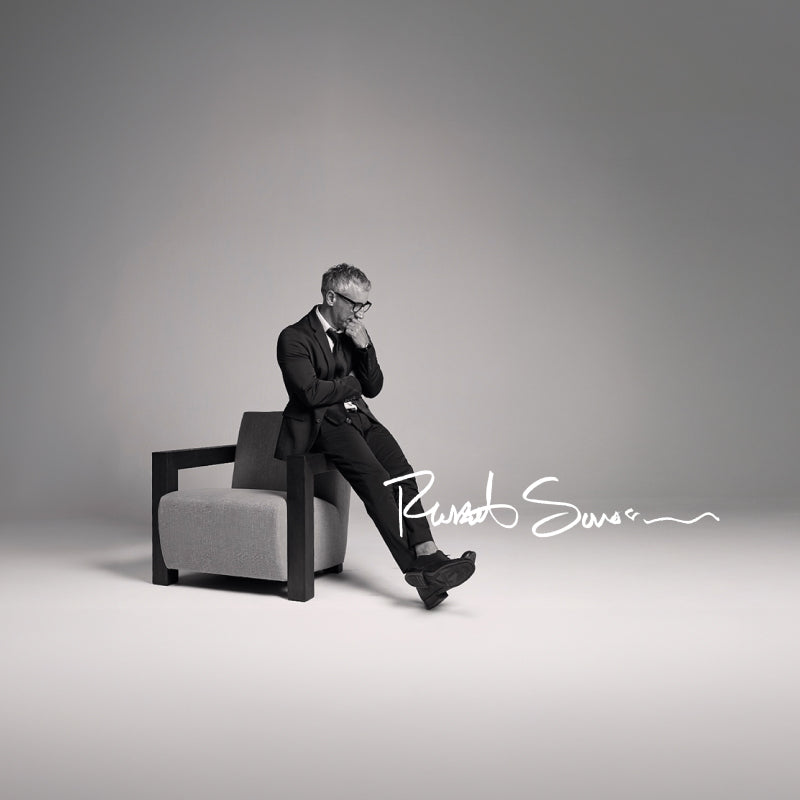

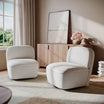
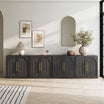



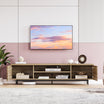
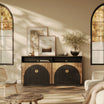

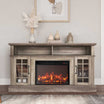
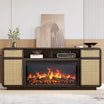

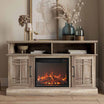
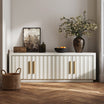

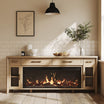
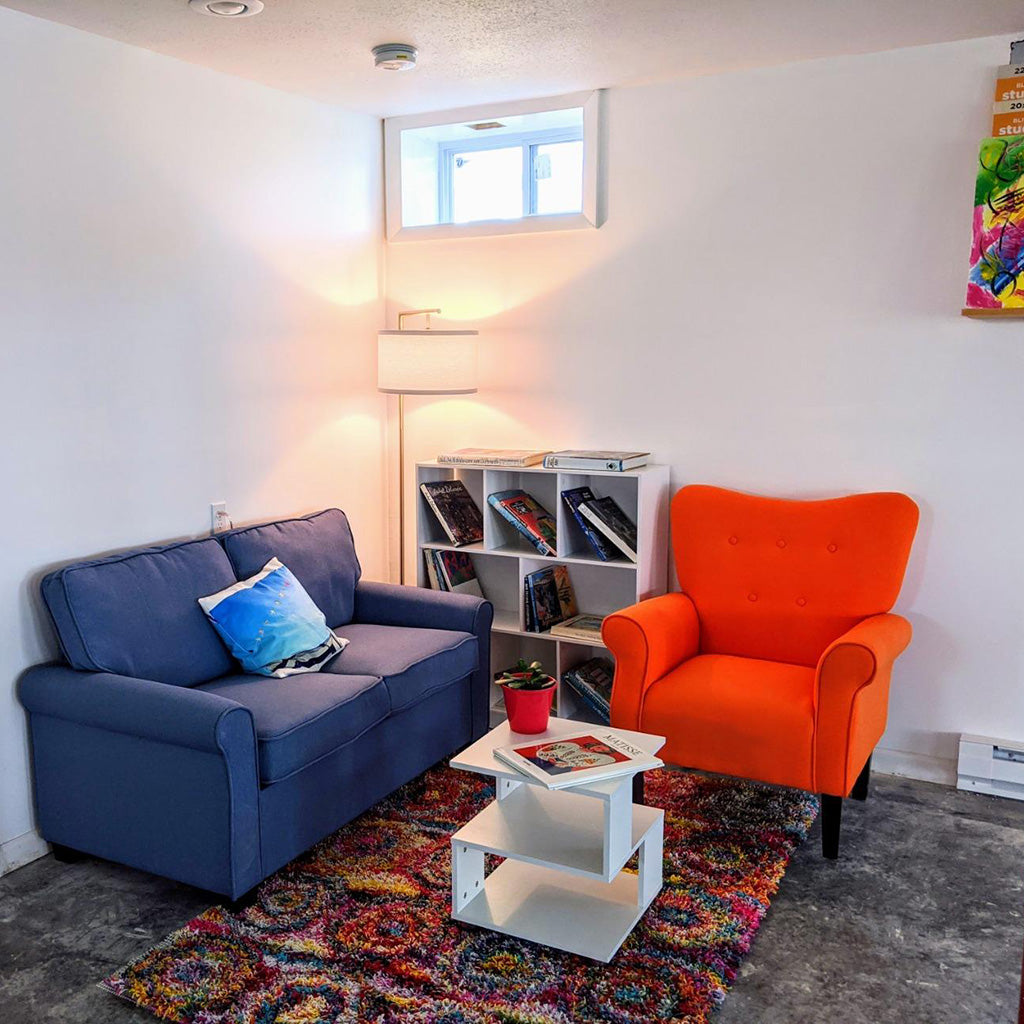
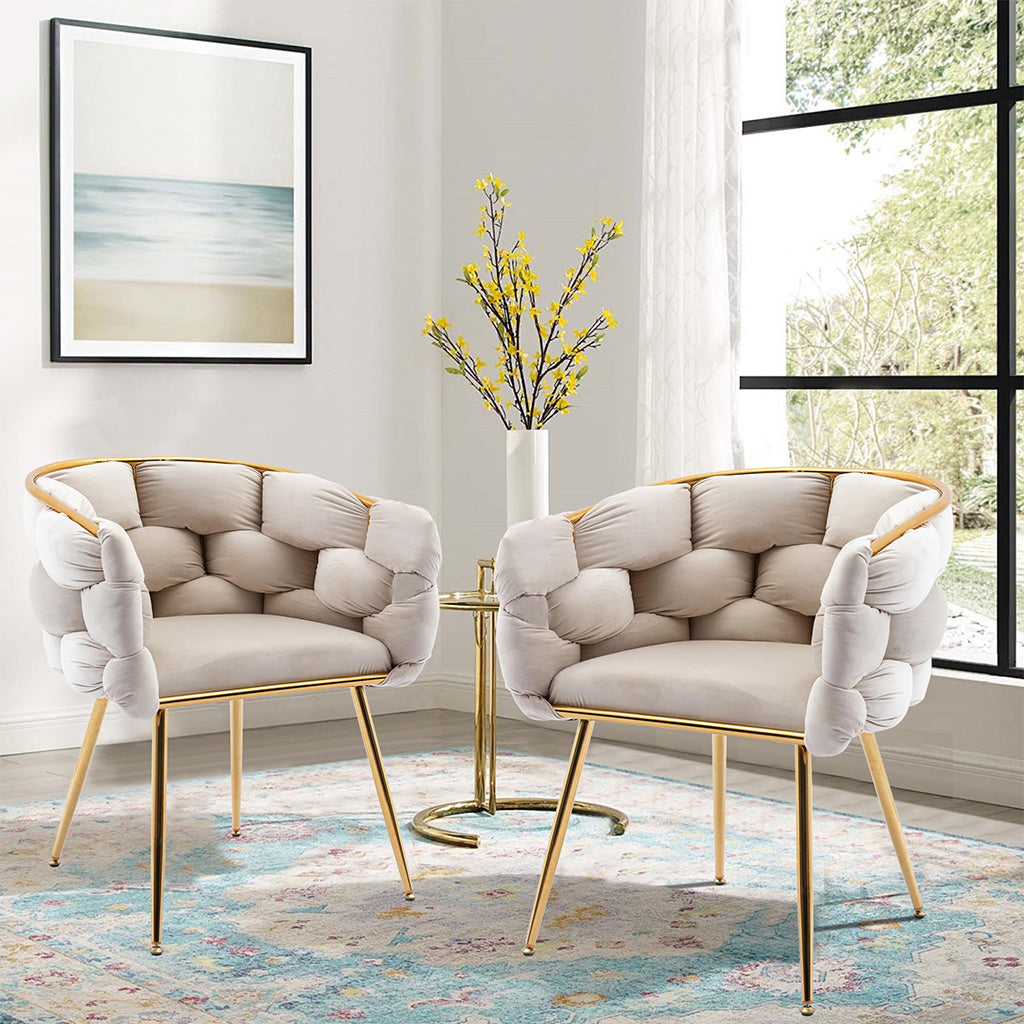
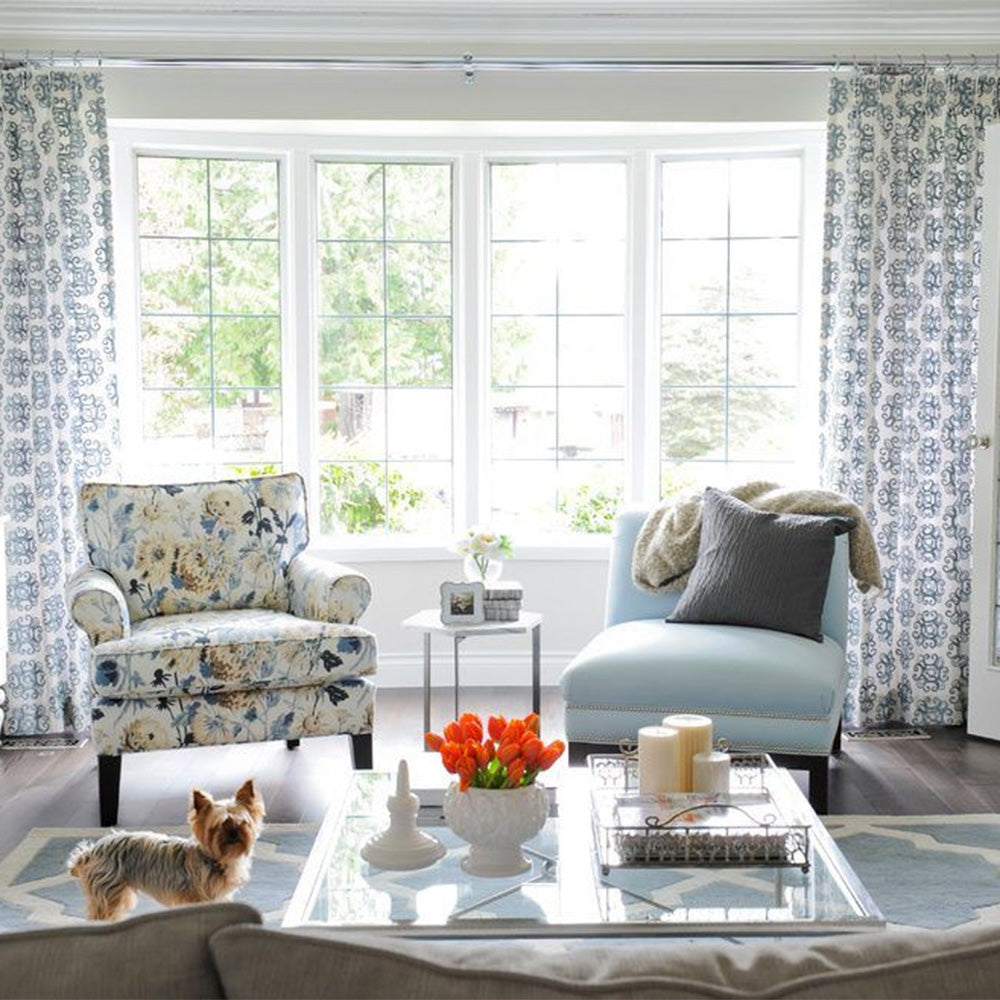
Leave a comment
This site is protected by hCaptcha and the hCaptcha Privacy Policy and Terms of Service apply.